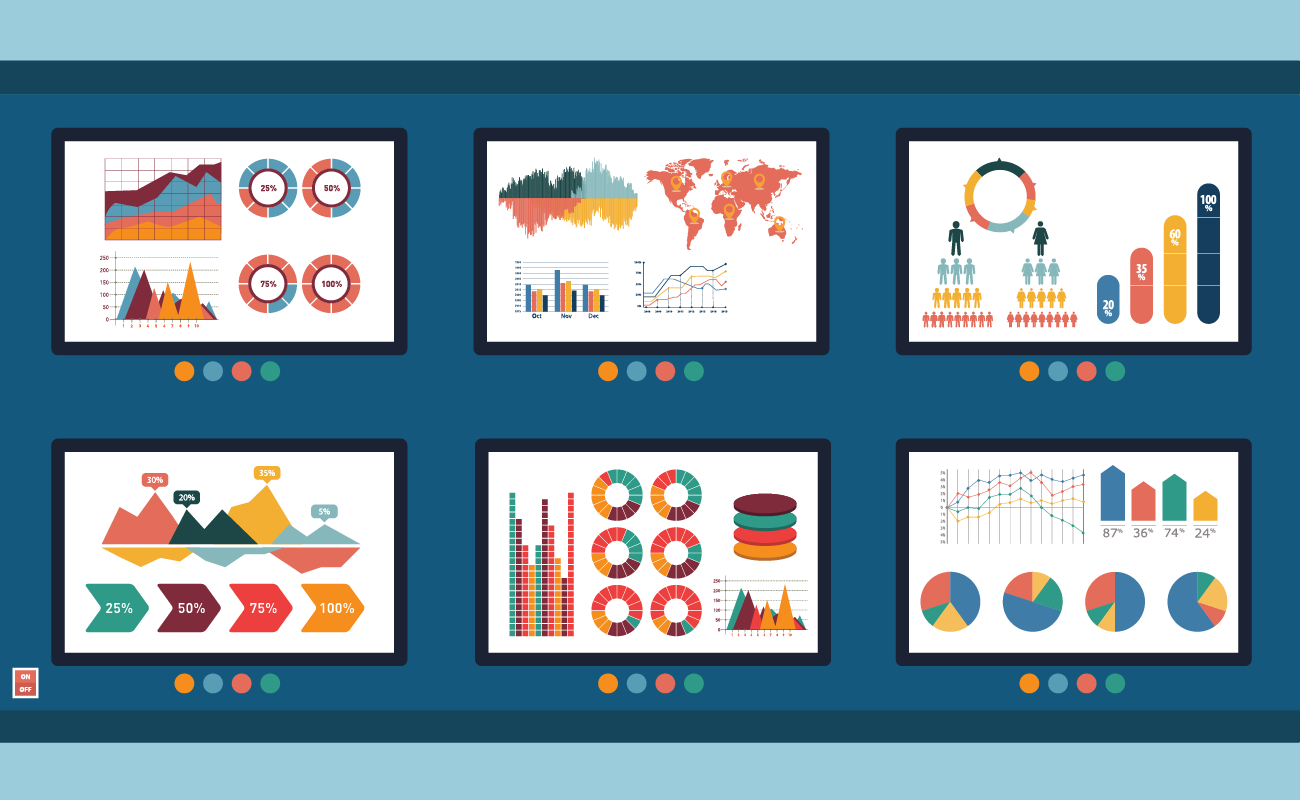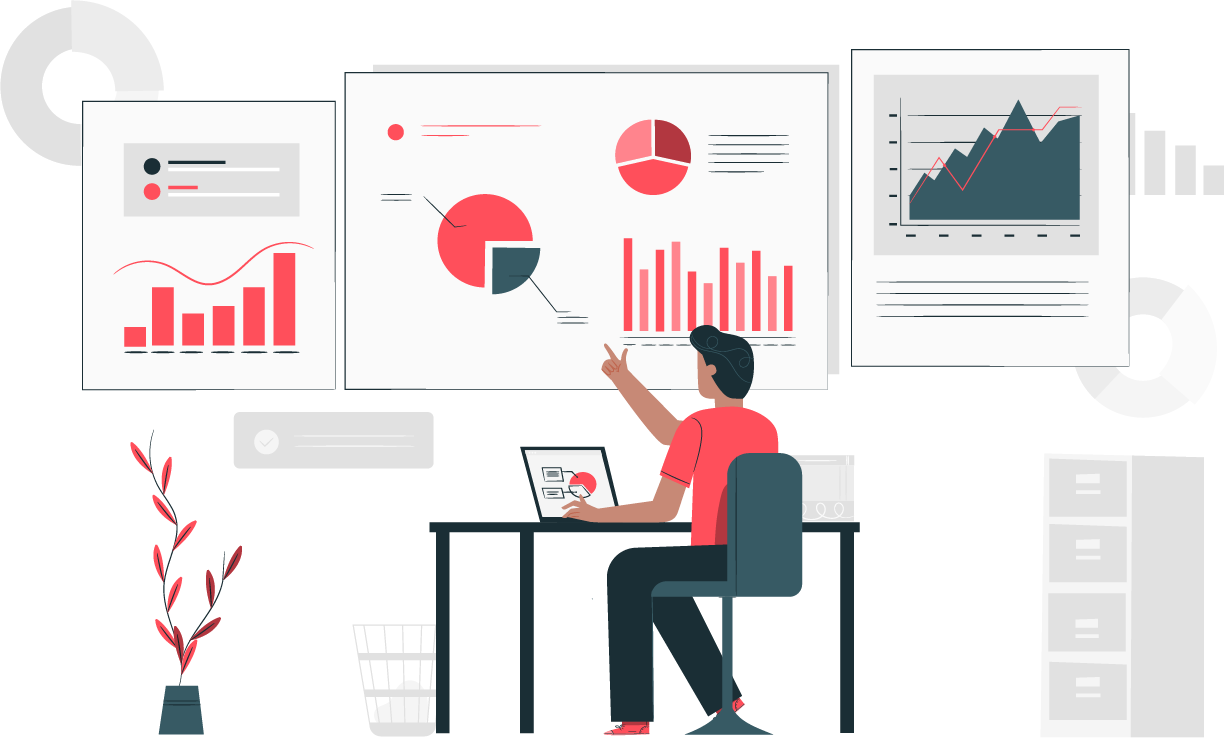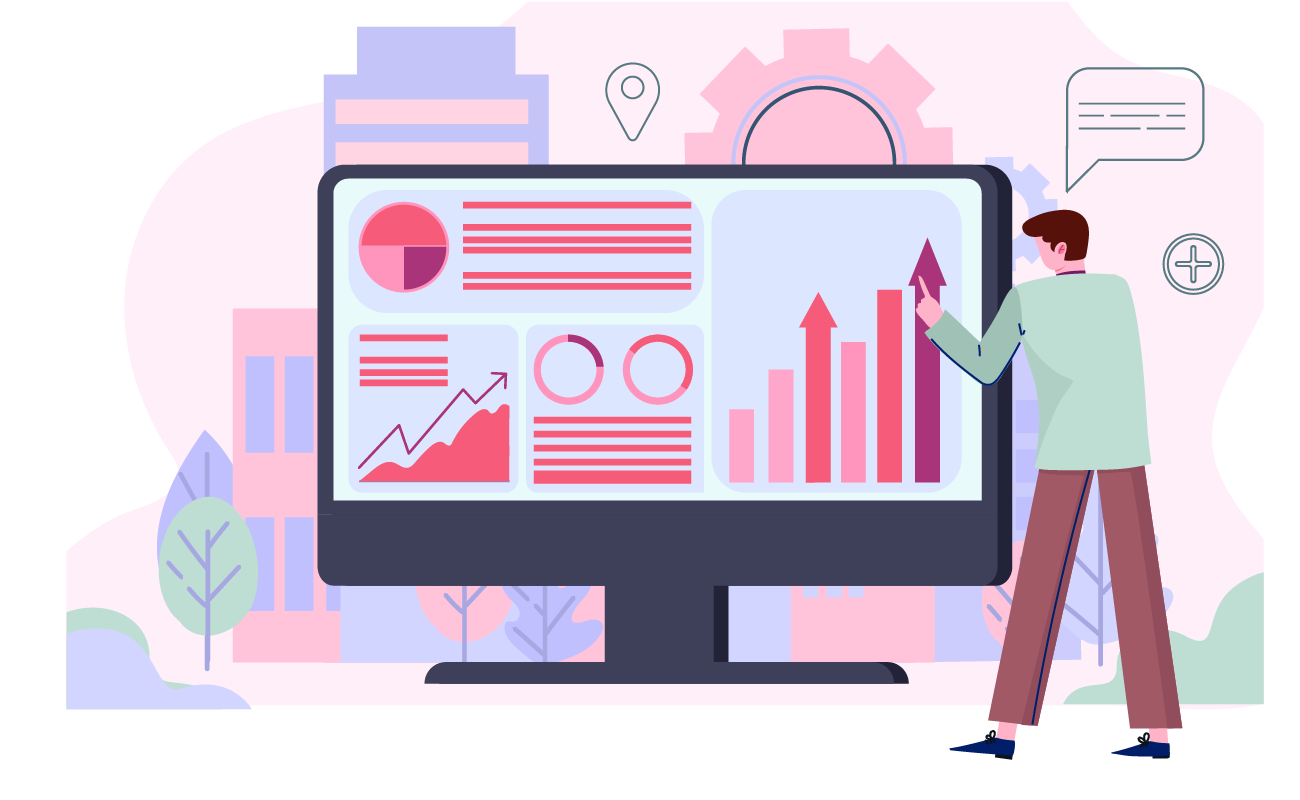In today’s digital age, information is power. But with so much data available everywhere, how can you decide what is useful and what isn’t? Moreover, even with useful data in hand, how will you be able to figure out how to use it correctly? AIT Global’s data mining and analytics solutions provide a seamless way to not only find the right data, but also get the right insights from it. Data mining and analytics helps you make sense of bulk data and translate them into meaningful business decisions.
How Is Data Mining Used In Business Intelligence?

Data mining is the simple act of identifying correlations, patterns, and trends within large datasets. Its use cases in business intelligence are truly only limited by your imagination. However, to simplify, its uses can be classified into 5 broad categories:
- Market Segmentation & Customer Profiling: every purchase that a customer makes becomes a crucial data point. Data mining allows you to identify the behavior of customer groups and create market segmentation for a more targeted marketing approach.
- Fraud Detection: with digital footprints becoming the norm, detecting anomalies in transactions has become relatively easy. Data mining allows you to detect such cases of fraud and take appropriate action in a timely manner.
- Predictive Analytics: if you’re not already familiar with it, predictive analytics is basically the process of looking at historical data and making predictions of the future. Naturally, quality data mining is the first step to getting reliable predictions.
- Process Optimization: data mining is crucial to identifying bottlenecks and inefficiencies in business processes. This involves looking at the relationship between operational data to identify which areas are prone to failures, errors, and redundancies.
- Product Recommendation: going a step further from predictive analytics, product recommendations use real-time user behavior to make recommendations on the products that the user may like to purchase. Even recommendation systems require data mining.
How Can Data Mining Systems Be Classified?
There are many different classifications of data mining systems. But the one we’re concerned with is based on the purpose of analysis. Based on this, data mining systems can be classified into 2 major categories:
Descriptive Data Mining
Descriptive data mining is primarily used for purposes of monitoring and reporting data. It works more accurately with past queries. The patterns and relationships that are identified in this type of data mining are used for summarizing and describing the past data.
Descriptive data mining is useful for accurately and efficiently carrying out business introspection by looking at the trends and patterns of business activity from the past.
Predictive Data Mining
Predictive data mining is carried out for undertaking further processes like predictive analytics and recommendations. As its name suggests, it identifies patterns and trends from past data and makes predictions.
Predictive data mining is useful when you want to make sense of past data and identify future trends. It can help you make business decisions regarding new projects and ventures.
What Is The Difference Between Data Mining And Data Analytics?

The basic difference between data mining and data analytics is pretty straightforward. In fact, the names reveal the meanings of the processes.
Data mining is the simple act of digging out large amounts of data and making it ready for further use. It is like the first step for any kind of processing of data. Data mining identifies the basic trends in large data sets and transforms them into an understandable structure that can be used for further analysis.
Data analysis is what comes after data mining. Once you’ve mined your data, you can use data analysis algorithms to gain meaningful business insights from the trends that you’ve identified. Data analysis allows you to take actionable steps towards your business goals using the data you’ve mined.
How Do Data Mining And Predictive Analytics Work?

The details of data mining and predictive analytics are too technical to dive into within a single article. Instead, we will look at the 5 broad steps that are involved in mining and analyzing data.
Data Preparation
The very first step in data mining is to collect, sort, and clean up the data. By cleaning up data, we mean that the data sets are made free from errors and converted to standardized formats. Redundancies are removed and errors are fixed before sending this data over for further processing.
Identifying Basic Patterns
Basic correlations, outliers, and patterns between data are identified. These initial relationships help to determine what kind of modeling techniques will be more appropriate for analysis. In this step, data is prepared properly for further analysis. This is where you go from raw cleaned data to understandable structures of patterned data.
Feature Selection & Second Cleaning
Once the data is transformed into structures of patterned data, relevant features need to be selected. The removal of irrelevant and redundant features acts like a “second cleaning” of the data. After this, using appropriate techniques, models of data are created.
Model Creation, Evaluation, & Tuning
Techniques like sampling, regression, etc. are used to create models of data. The models are then evaluated for various parameters. In most cases, models require some tuning before they can be deployed. This involves modification of model parameters.
Once the model is fine tuned, it is ready for deployment.
Output Interpretation
This is where you will get the final analyzed information. You can use this information to gather meaningful insights and make business decisions.
Looking for a reliable partner to help you with data mining and analytics? AIT Global has expert solutions customized for your business needs. Contact us today!












 AI Tools For Small Businesses
AI Tools For Small Businesses  AI Examples in Everyday Life
AI Examples in Everyday Life  Use Cases of Conversational AI
Use Cases of Conversational AI  What is Conversational AI
What is Conversational AI  What is AI and AGI? Navigating the World of AI and the Future of Super Intelligence
What is AI and AGI? Navigating the World of AI and the Future of Super Intelligence